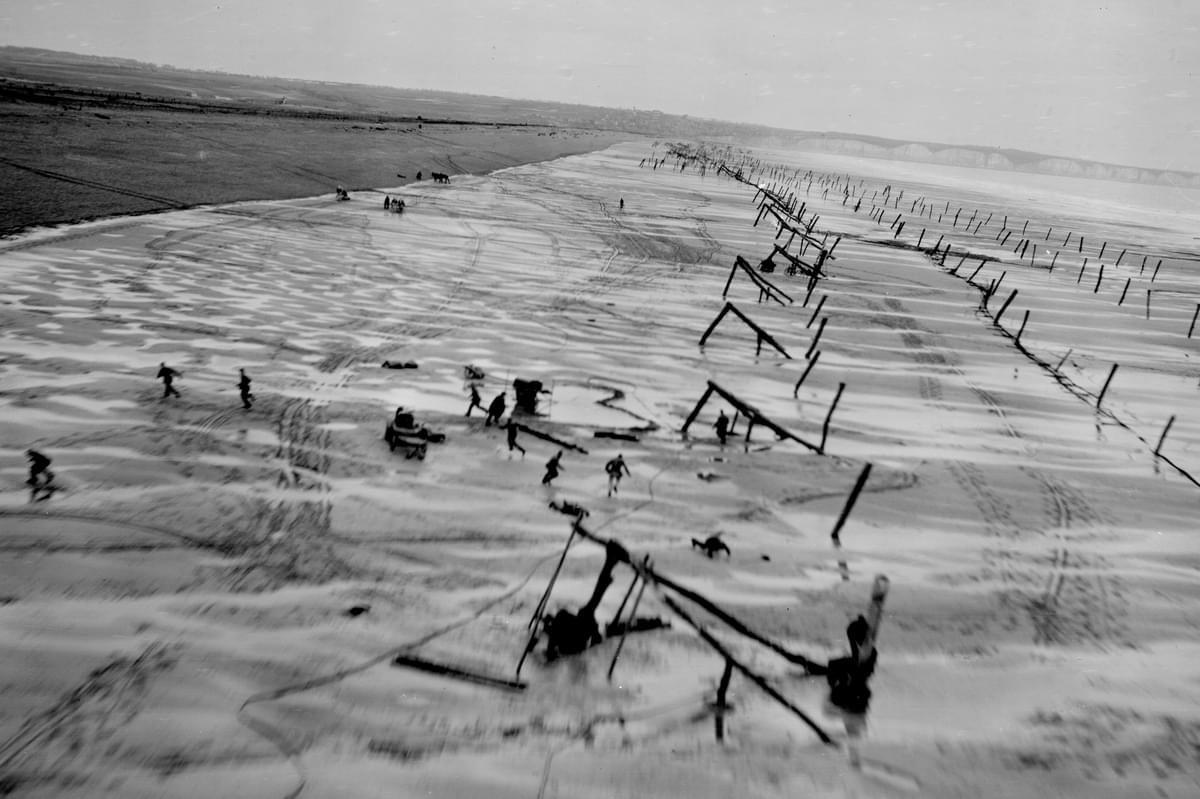Dirk Bogarde: Photographic Interpreter Turned Hollywood Film Star
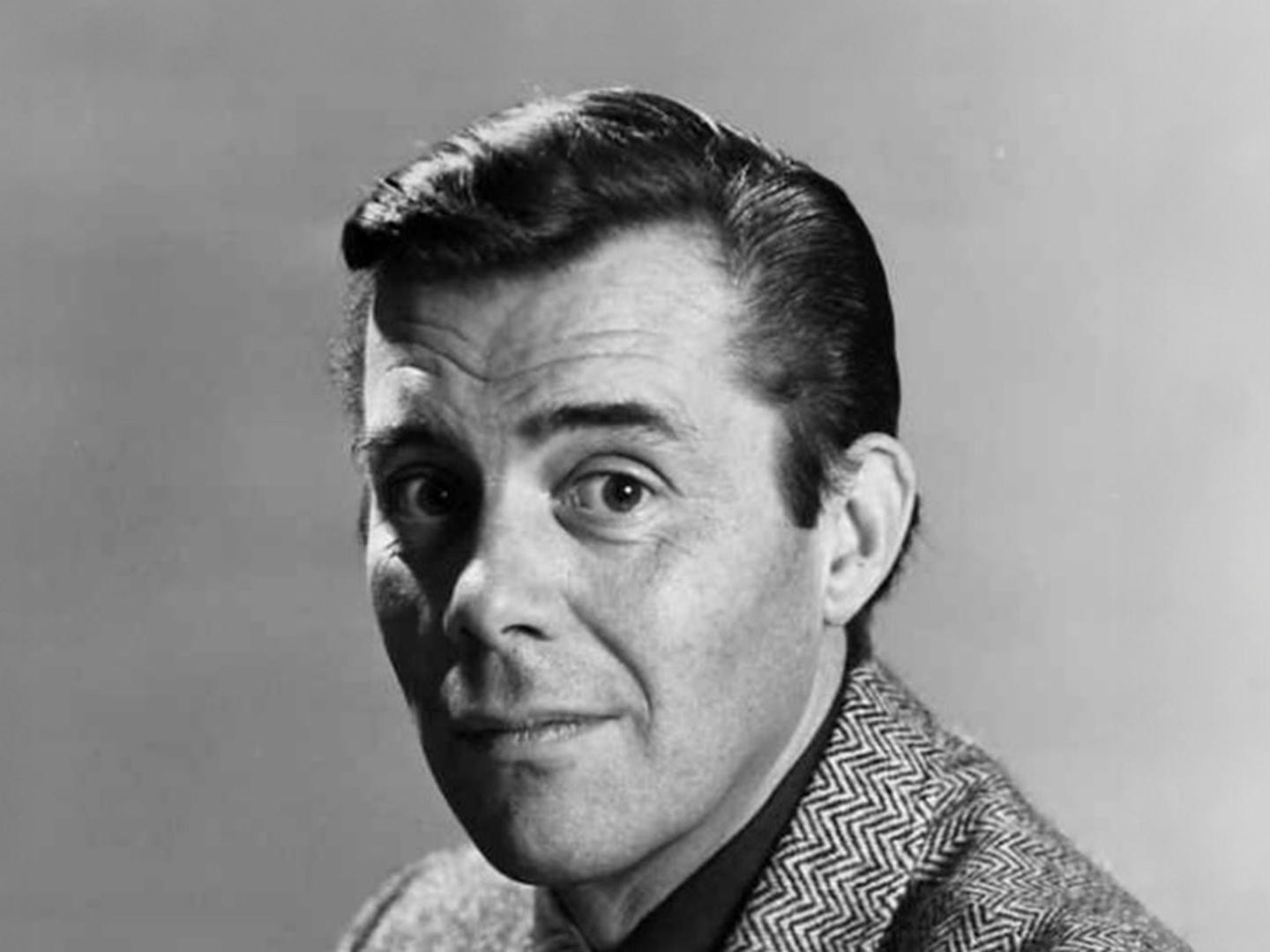
As part of LGBT+ history month, we are celebrating the life and work of actor Dirk Bogarde (1921-1999). During the Second World War, Bogarde (born Derek Jules Gaspard Ulric Niven van den Bogaerde) served at home and overseas as an Intelligence Officer with the Army Photographic Interpretation Section, analysing aerial photography to identify potential targets and enemy movements. The photographs that he would have been analysing, or ones very similar to those, are held in the Allied Central Interpretation Unit (ACIU) Collection at the National Collection of Aerial Photography (NCAP).
Upon returning to England at the end of the war, Bogarde became a household name as a film actor, before becoming known as an author in the 1970s. While he was not openly gay during his lifetime, he can be seen as a key figure in the advancement of the conversation surrounding homosexuality through his choice of roles at a time where public sentiment was incredibly unforgiving for such portrayals of intimacy.
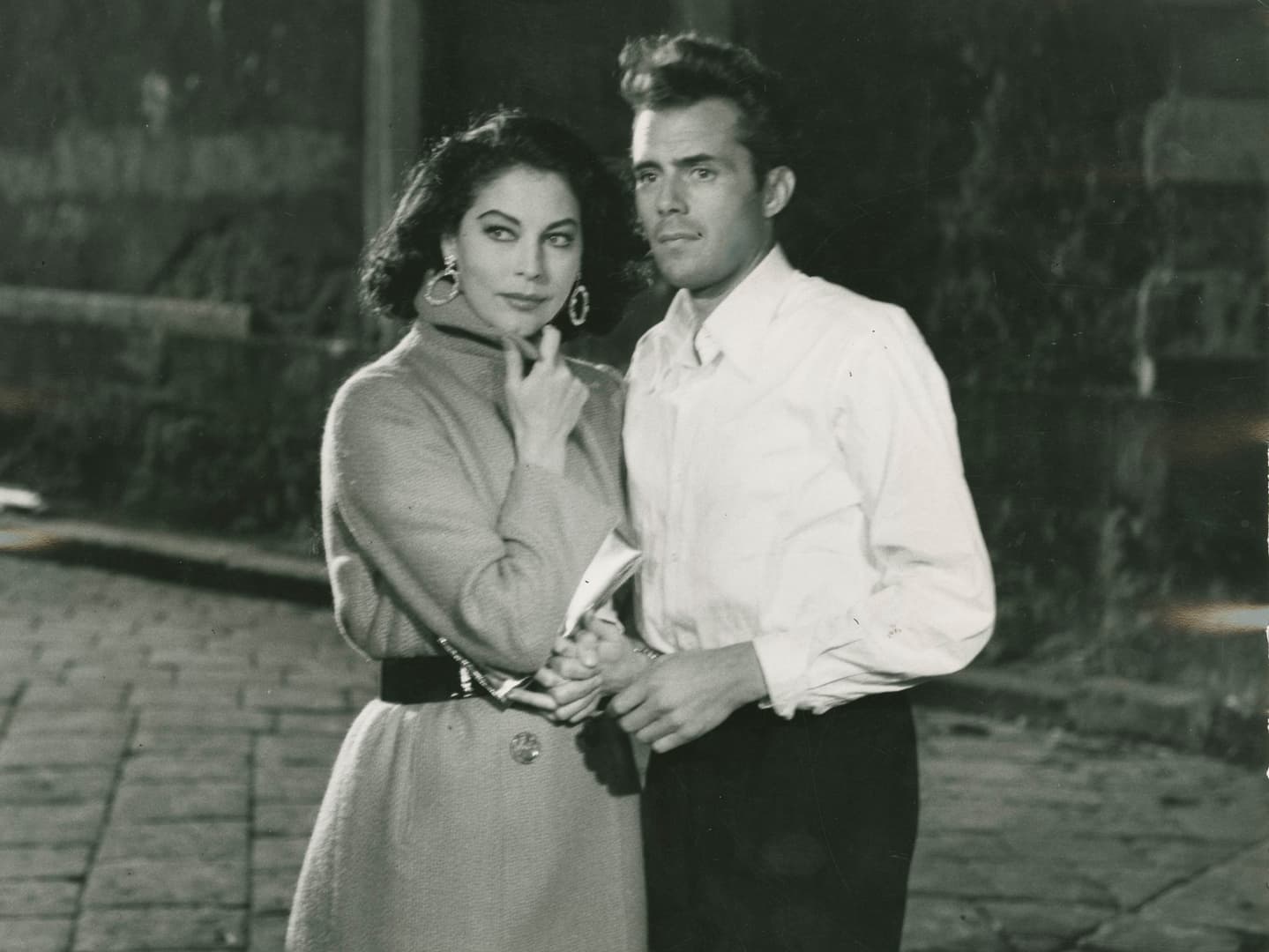
Dirk Bogarde and Ava Gardner in The Angel Wore Red, released 1960. Touring Club Italiano, CC BY-SA 4.0 <https://creativecommons.org/licenses/by-sa/4.0>, via Wikimedia Commons
early life and war service
Bogarde was born in London on 28 March 1921 to a Scottish mother and Flemish father. He started his career by attending drama school at about the age of 19, before working as a commercial artist and a scene designer, all while appearing in amateur dramatic society theatre productions. He enlisted in 1940, climbing the ranks to Lieutenant in the Queen’s Royal Regiment by 1943.
Bogarde first visited RAF Medmenham, the home of the Allied Central Interpretation Unit, in the spring of 1944 and was quickly assigned to No. 39 (Reconnaissance) Wing of the Royal Canadian Air Force as an Intelligence Officer. He travelled to France with No. 39 Wing in the wake of D-Day in June 1944, with the primary focus of assisting the British and Canadian forces in their advance through occupied Europe.
In his memoir Snakes and Ladders, Bogarde said of this work: ‘You need observation, an eye for detail and memory. I loved the detail, the intense concentration, the working out of problems, the searching for clues, and above all, the memorising’.
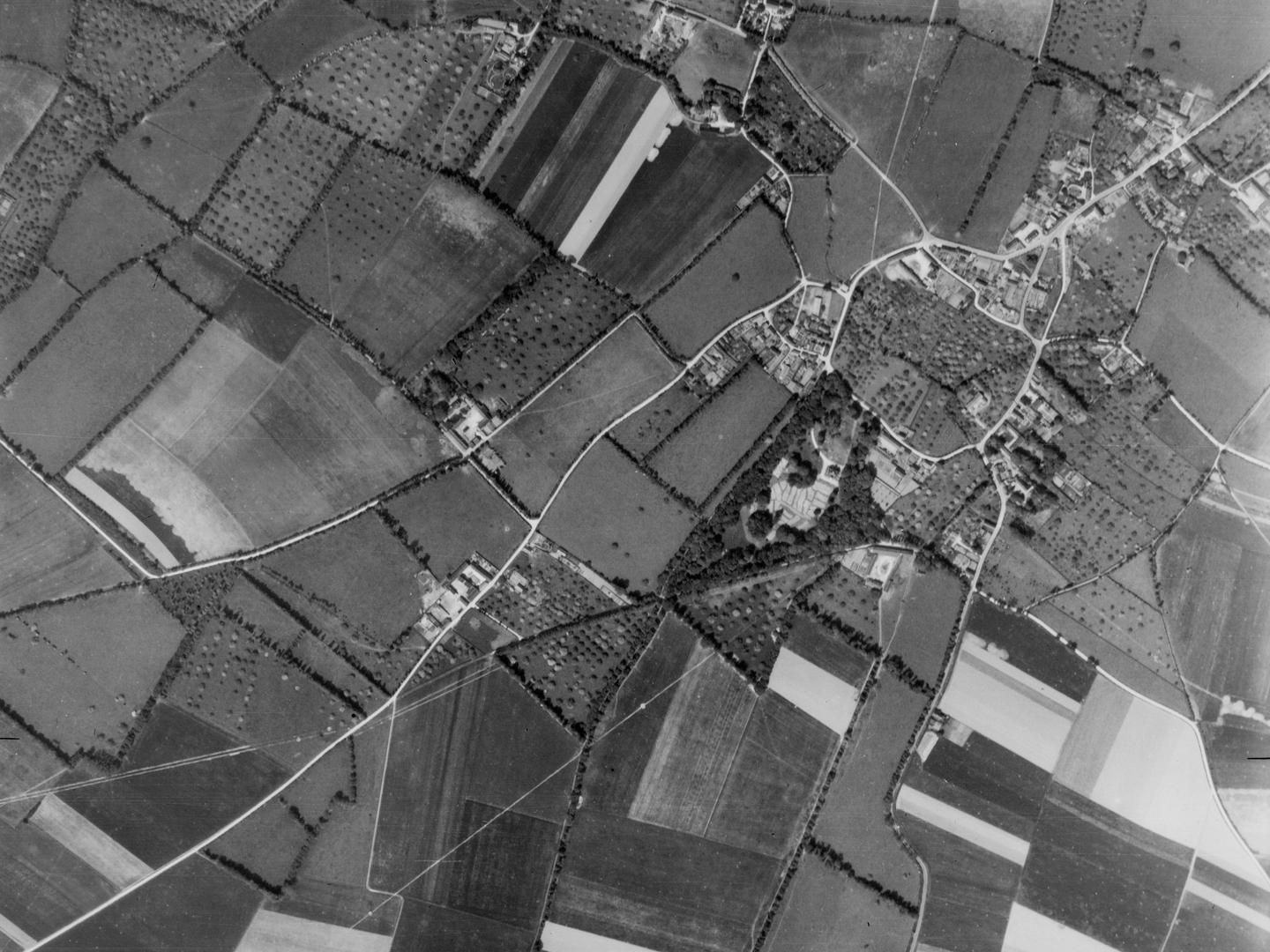
Countryside around Sommervieu, Normandy, France. Bogarde spent time in Sommervieu as a photographic interpreter in the aftermath of D-Day. Collection: ACIU, Sortie: 16/0345, Frame: 4208 (30 May 1944)
Following VE-Day in May 1945 Bogarde was sent to India, where a group of Photographic Interpreters were based outside of Calcutta (now Kolkata) at Bally, to support ‘Operation Zipper’ – part of efforts to recapture Singapore. He was then posted to Batavia (now Jakarta), Indonesia in 1945, before finally returning to the UK in September of 1946.
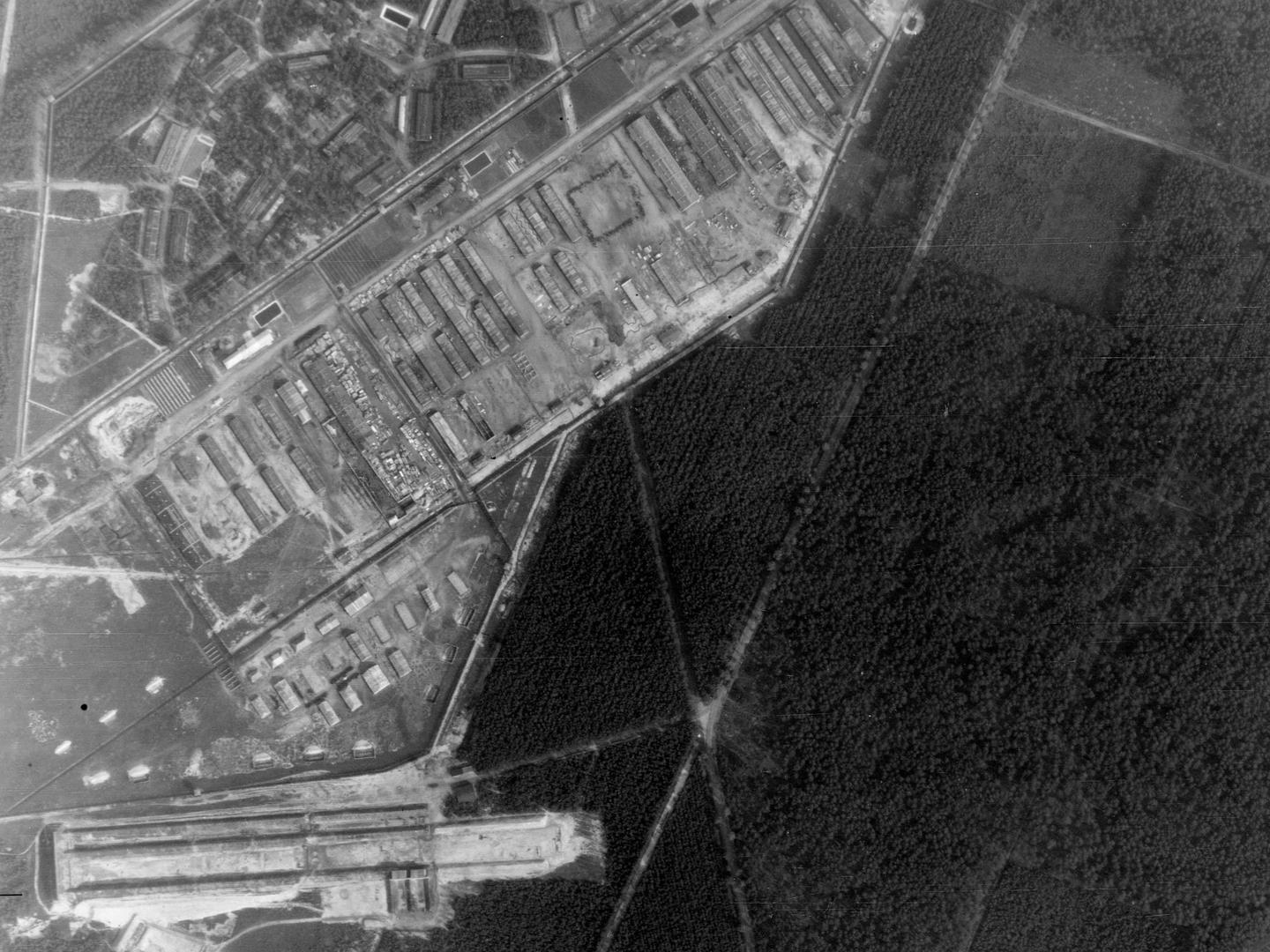
Bergen-Belsen Concentration Camp, Lower Saxony, Germany; Bogarde visited in April 1945, an experience that haunted him for life. Collection: ACIU, Sortie: 106G/2946, Frame: 3051 (17 September 1944)
post-war fame
While he once again took to the boards as an actor upon his return to England, he soon pivoted to film roles under the name Dirk Bogarde. His first appearance as a leading man was in Sin of Esther Waters (1948), and he became the face of Dr Simon Sparrow in several film adaptations of Richard Gordon’s Doctor series, which solidified his fame as a film star.
He turned to more serious films as his career progressed, including his portrayal of Melville Farr in Victim (1961), a successful barrister who is blackmailed for a romantic entanglement with a younger gay man. This role was undertaken at great personal risk to his career, particularly as it premiered when all homosexual acts were criminal offences.
The film, and Bogarde’s performance, is credited as contributing to the partial decriminalisation of homosexuality within the United Kingdom via the 1967 Sexual Offences Act. His other masterpieces were considered as The Damned (1969), Death in Venice (1971) and The Night Porter (1974), although his appearances on screen continued into the 1990s. In 1977, he starred alongside a host of Hollywood talent in A Bridge Too Far about Operation Market Garden, ironically playing the role of Lieutenant-General Frederick Browning, whose neglect of photo intelligence would have tragic consequences.
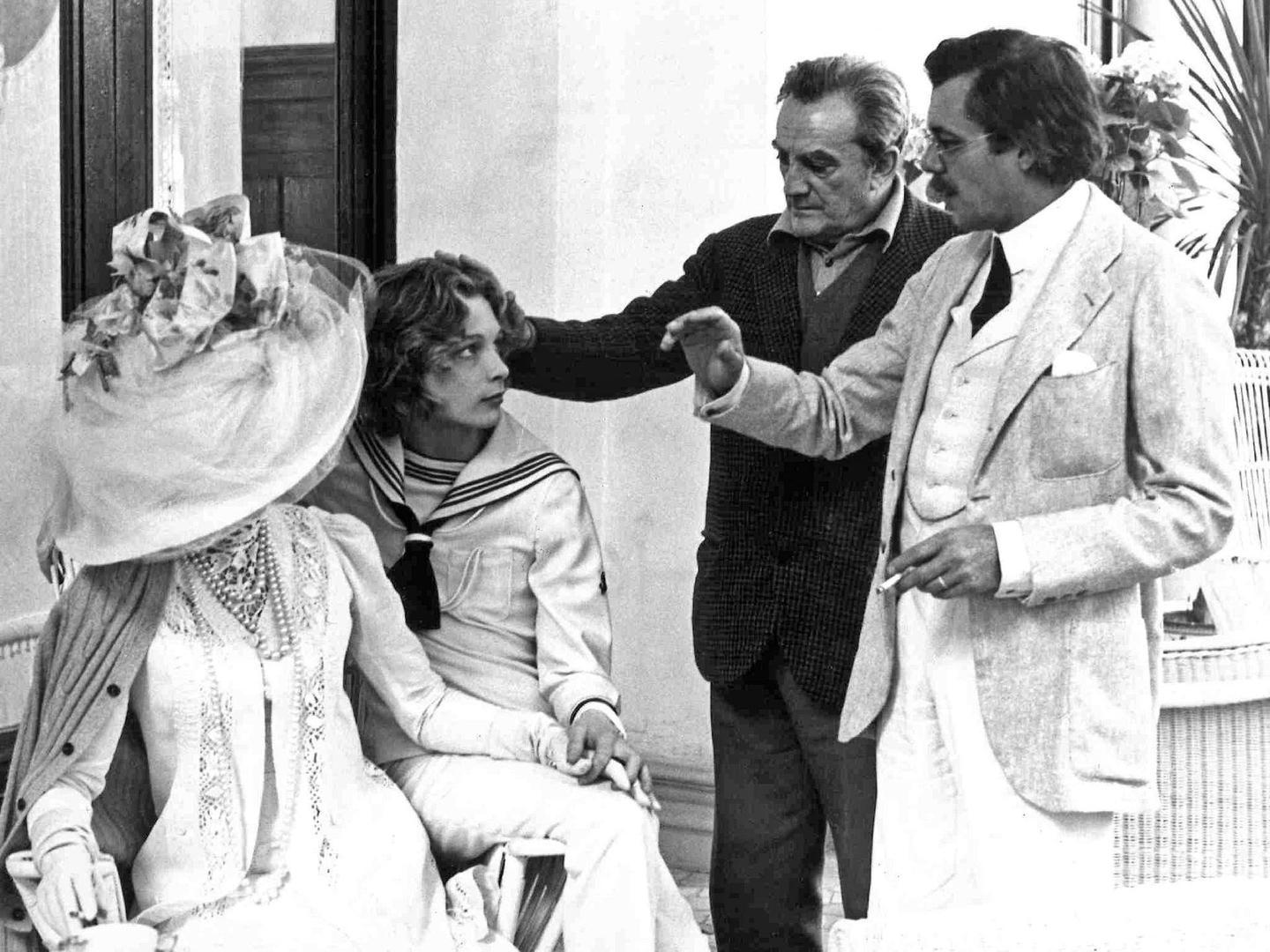
Silvana Mangano, Björn Andrésen, Luchino Visconti and Dirk Bogarde (far right) during filming of Death in Venice, c.1970; Unidentified author, public domain, via Wikimedia Commons
a private life
Despite writing a nine-volume memoir about his life, Bogarde remained an incredibly private individual. Despite many heterosexual on- and off-screen romances, it was widely speculated throughout his life that he was gay. While he denied that his close relationship with his manager Tony Forwood was anything other than platonic, in more recent years it has been understood that they were life partners and were together for over 40 years.
The impact that Bogarde and his work had throughout his life is inarguable. His work as a Photographic Interpreter in ACIU on the intelligence captured by photographic reconnaissance units was critical to Allied missions throughout the war, especially D-Day and the eventual end of the war; and as a film star, his portrayal of relationships previously silenced were key to the advancement of LGBT+ rights in the United Kingdom.
Ravana Eagleheart, Collections Assistant
Read more about how to interpret aerial images, and discover the Allied Central Interpretation Unit Collection:
Types of Aerial Images Interpreting Aerial Images ACIU Collection

